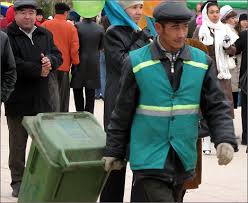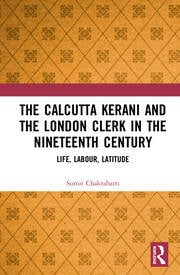Reflections,1
Posted on : April 23, 2017Author : AGA Admin

Unlike the systems that are in place for the movement of capital (the IMF) or goods (WTO) a complex network of intergovernmental organizations focus on trans-national movements of people. There is little coherence among them except in cases of refugee movements particularly from conflict prone regions. By definition the movements of people involve at least two states and in many cases three or more as labour migrants transit through third countries to reach their destination. But as long as states retain exclusive authority to decide on who enters and who leaves, the free movement of people for efficient resource allocation of benefit to all will remain restricted. The reason is not that the free movement of people, like the free movement of capital and goods would not result in more efficient use of resources, but because disregard of national boundaries would mean the end of the sovereign state. Even the most ardent neoclassical economists recognize that with respect to movement of people there remain other considerations than the efficient use of resources. In the absence of state control over immigration, titular communities would lose control over central cultural symbols of national life and political control over the state. Concern for maintaining particular national identities, widely shared values and control over political institutions therefore preclude a policy of open entry. Countries do however offer open entry policy to those with whom their populations share close ethnic affinity or those with whom they have ethnic ties or in cases where there is a sense of obligation or guilt.
The Central Asian migrant labour experience is a typical example. In the former Soviet space, Russia and Kazakhstan are the principal receiver states while labour migration in significant numbers takes place from Uzbekistan, Kyrgyzstan and Tajikistan.ShukhratBerdyev’s story (In Diary of a Gastarbeiter) is a familiar one of a middle aged Uzbek school teacher who in the post Soviet era is faced with the prospect of traveling to Moscow to work as a loader at the Tyoply Stan market. His experiences in the market as a loader, which include his reception and help from fellow country-men in the market, his existence on the edge of legality and the nightly encounters with the police are in sharp contrast to his first trip to Moscow in the summer of the Olympic Games when as a student but also a Soviet citizen he had enjoyed the city in all its glory, The Central Asian gastarbeiter experience follows a familiar trajectory. A stint in Moscow, followed by experiences in the Russian countryside as a labour (in Shukhrat’s case as a carpenter) intercepted with news about violence and the looming presence of the Russian mafia boss. It is a story of repeated return, practically every year if not to Moscow then some other location (in Shukhrat’s case Siberia) despite the dangers of aggression and fraud in a system that offers no legal protection. But it is also a story full of unexpected developments as Shukhrat, like many others enters into ‘civil marriage’ with a local woman with the knowledge and support of his Uzbek wife Gulsara. There is always the lurking threat of being replaced with local unskilled labour despite the conviction that Russians would not be interested in the menial labour contributed by the Uzbeks and the Tajiks. Shukhrat’s diary is also incomplete indicating at one level his continuing visits to Russia and on the other the ongoing global movement of illegal labour as an enduring reality.
Shukhrat’s story has several layers. It reflects on an economy where seasonal work as gastarbeiterbecomes a necessity to support families and particularly families with growing children, the social acceptance of this necessity and its consequences as also helplessness in the face of hostility and the lurking fear of becoming a victim of that hostility. But it is also a story that clearly indicates the existence of well established informal institutions of support and therefore the fact that Shukhrat’sgastarbeiter experience is neither isolated nor recent. The necessity of this labour is recognized at the local level and as Shukhrat moves away from Moscow the lack of dignity that he endured there is significantly reduced. However, there is also a complete lack of legal recognition of this numerically significant migrant group bringing into focus the eternal dilemma of both sending and receiver countries about this trans-national movement.
Globalization has transformed the world. On the one hand it has brought societies and economies closer together, initiated flows of investments, goods, ideas and images in circulation and ended the possibility that states will act as containers of their population. But the global world is also enmeshed in instabilities and zones of disorder. It has generated refugees as also migrants looking for employment and often the distinction between the two is blurred. Once this is coupled with the fact of the growing ease of movement and communication which globalization creates it is easy to understand why there has been a dramatic increase in population movement. Globalization has placed the state in a new dilemma, one in which it seeks labour in order to remain competitive but is also apprehensive about the kinds of threats that these movements can bring with them. These point to the probability that the global world has two faces, a world of benefits and opportunities and also one that offers potential for all forms of crime, trafficking and terrorism. All of these pose a new danger to states. The migration-security nexus is an expression of the state response to this new situation, a situation where the threats to the state comes principally from these new flows and diffuse networks. In most post-colonial situations, these flows were from the newly independent states to the metropolis, and founded upon assumptions of the fundamental incompatibility of certain “cultures” and “people”. However there is no inevitable connection between migration and security. Conventional international relation perceives migration-security as a reaction on the part of states to emerging scenarios that are perceived as ‘threats’. As a result a whole series of dangers and fears come to find embodiment in the social figure of the immigrant, the refugee and the human smuggler. And by extension a series of measures are put in place to securitize both spaces and flows. This, however, ignores the fact that securitization of borders has rarely provided a solution to illegal immigration. The problem is not how to balance security policies with free trade practices but to recognize how this security perspective obstructs and marginalizes the space in which different politics of migration could take place and dualisms like national/foreigner, citizen/illegal and worker/scrounger could be overcome.
Anita Sengupta




